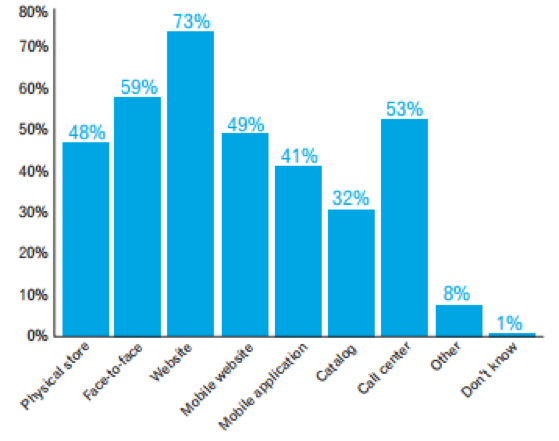I do User-Experience. Do you?
Like it or not, we’re all in the user experience business. The customer sits at the core of any successful organisation so it’s therefore imperative that brands take steps to understand their consumers, and integrate that intelligence into the business, to retain competitive advantage.
A recent Econsultancy and Station10 report on “Multichannel Customer Intelligence” explored how far companies have come when it comes to data deployment. It identified the varying stages companies find themselves at in their ability to use insights to deliver the seamless customer experience that consumers have increasingly come to expect.
One key finding was that no matter how advanced an organisation is in its ability to work with data and feed insights back into its wider strategy; if the initial customer data acquisition doesn’t hold up to scrutiny, you’re steering a sinking ship.
Next to Godliness
Cleanliness is next to godliness – or so they say. But when it comes to useful, reliable data that adage certainly rings true. However it is acquired, you must be able to ensure that the information you gather is accurate at the point of collection and remains accurate over its lifetime.
Data is always at risk of falling out of date – especially if customer interactions are infrequent – so it’s essential that you consider the acquisition channels and tools that you use to keep your data current.
Lean, Mean, Insight Machine
More is not necessarily better. There is an increasing volume of data available to us – but you can have too much of a good thing. As customers become more at ease with giving up personal data and business tools become adept at collecting it in hoards; we get information overload.
In today’s world in which high profile cyber attacks are making the front pages almost everyday, keeping data safe is increasingly challenging. Not only does it cost to store data securely (making it uneconomical to retain more than you need), the sheer volume of data businesses hold makes it more difficult to unearth valuable insights from the mass of material available.
You’re hiding your diamond even deeper in the rough. When it comes to data: less is more.
To reduce waste, you need a rigorous approach to data acquisition, and a tightly defined data insight and marketing strategy.
Which Channel Is Best?
The website is the most popular channel for brands to collect data. According to Econsultancy’s research, 73% of companies make use of this platform to acquire information on their customers.
Conversely, but perhaps unsurprisingly, interview results revealed that physical environments – the call centre, face-to-face, the physical store – still deliver the greater customer experience.
Findings like these should inspire businesses to reconsider their methodologies. They need to be agile enough to adjust their data strategy to fluctuating consumer demands. These physical channels offer us some of the most interesting, contextual data, as well as providing an opportunity to positively impact customer relations.
Delivering a great user experience while simultaneously collecting meaningful data is the ultimate goal. It’s a self-perpetuating cycle: the better you know your customer, the better you can tailor an experience to them, the greater their engagement will be, and the more information they will give you in turn.
Tracking Consumers On and Offline
Increased access to web-based and mobile customer data is providing brands with a deeper understanding of their customers. Insights now abound – not only in relation to specific consumption habits, but also daily routines, living spaces and interactions within and between different influencer groups.
Advancements in social and location-based marketing enable us to track consumers visiting particular channels or working on a certain device. But many companies still lack the ability to merge on and offline data sets and gain a holistic customer view.
Only 21% of companies interviewed consider themselves able to successfully link their offline and online data. While 34% confess to having no ability to link online and offline data at all.
The power to match-up offline data to online identities to create that all important single customer view is essential to providing a seamless user experience across all devices and channels.
There is a real drive to find new ways to merge different sets of intelligence to create that 360-degree customer view. In turn, this can enable a more holistic level of service from the company to its customer.
Data, Done Right
The advantages of doing data well are becoming increasingly clear. The benefits are evidenced in a number of industry case studies where conversion rates are rising and companies are seeing a reduction in costs and an increase in customer engagement.
Senior executives interviewed by Econsultancy were in agreement: with so much potential in the evolving data market, the importance of an effectively managed and ruthlessly selective multichannel customer intelligence strategy cannot be overstated.







